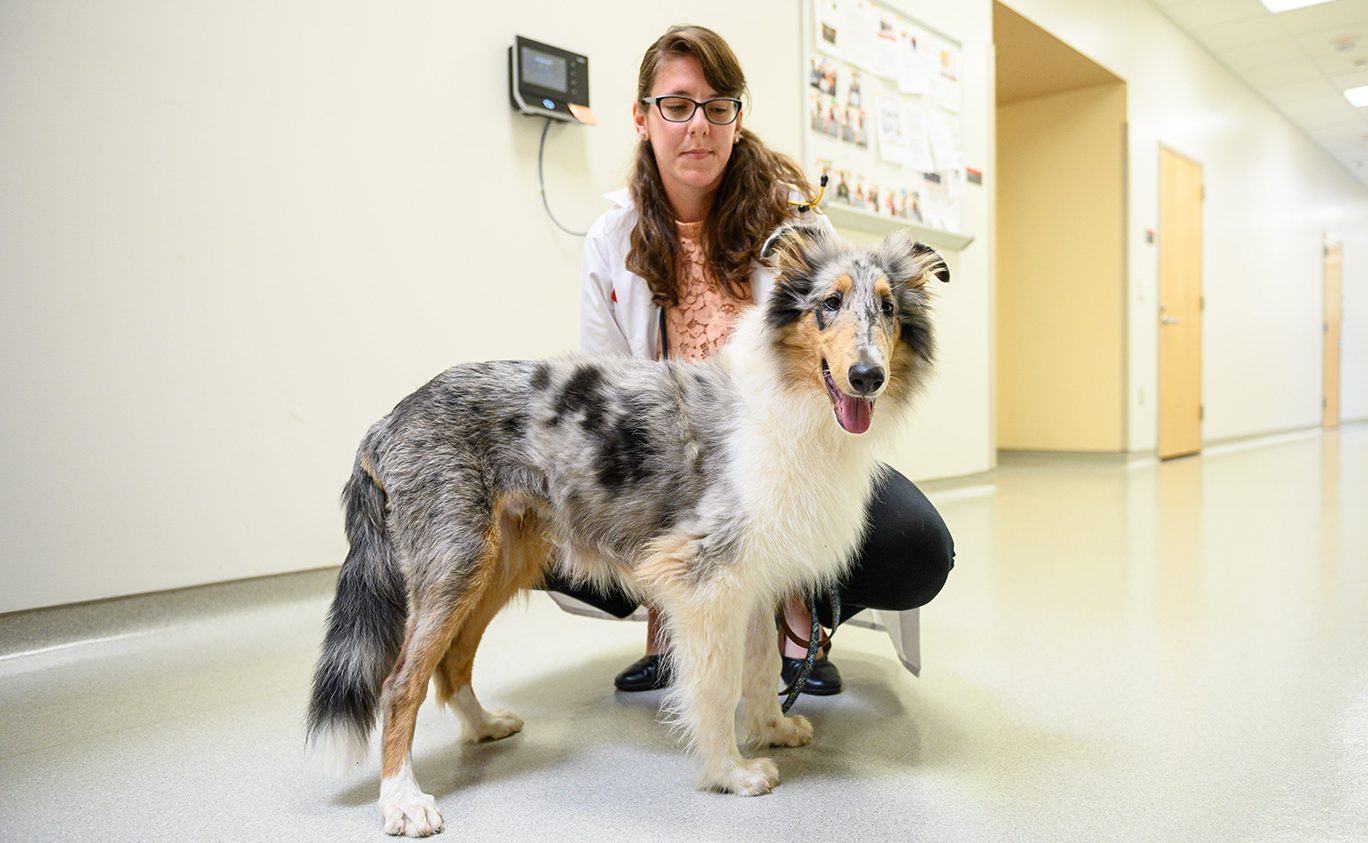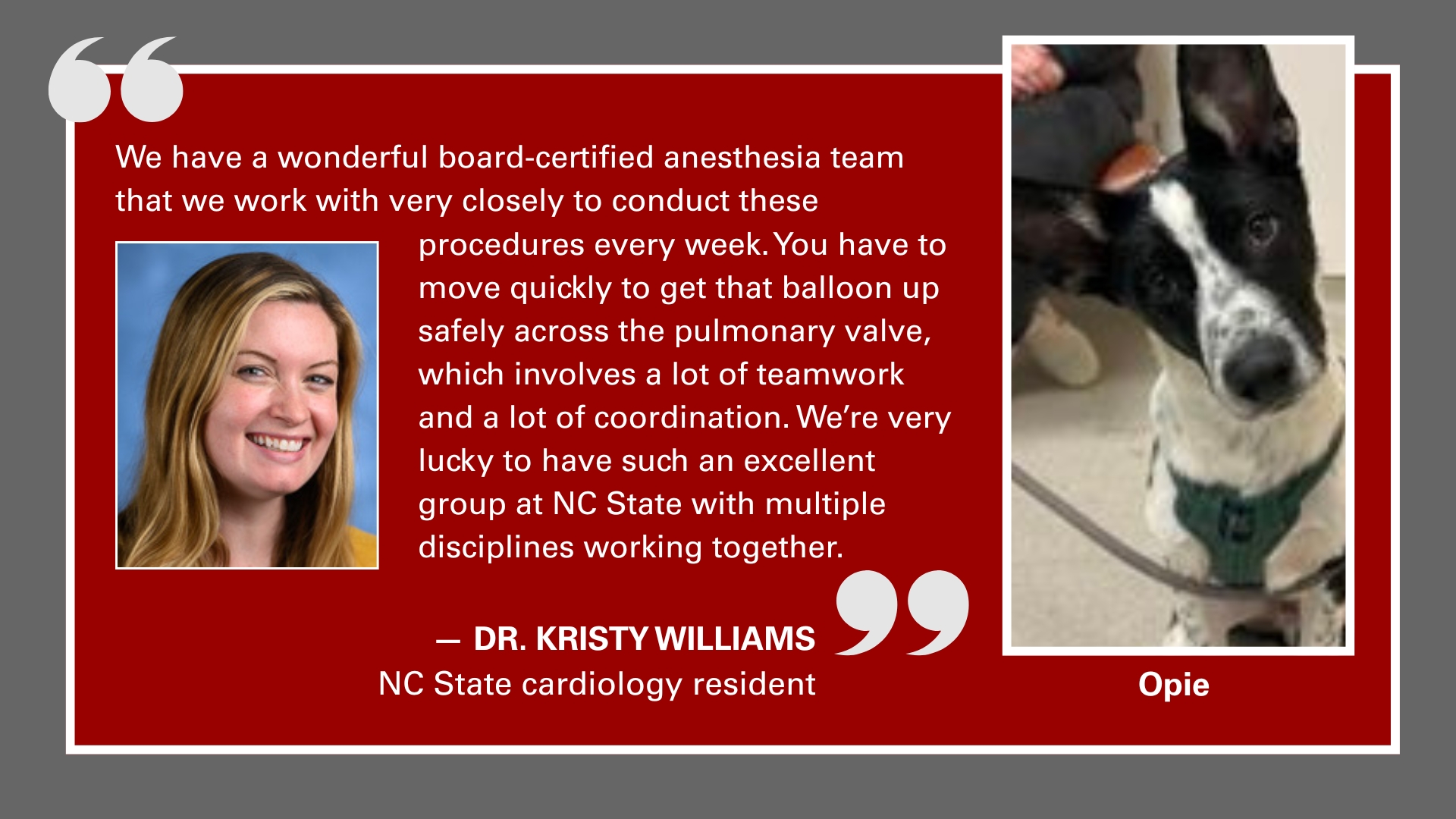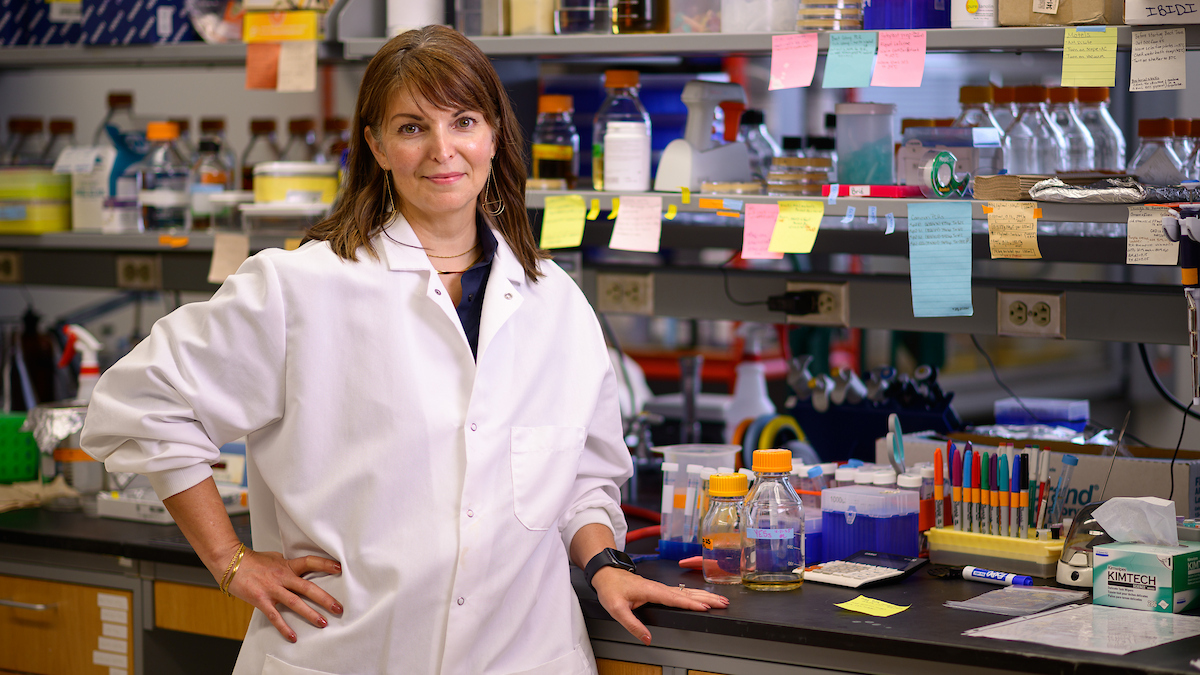Patient Spotlight: Modeling the Way with 3D Technology

Sharon King didn’t plan on bringing home a puppy anytime soon. Though her golden retriever, Bella, was getting older, King wasn’t seriously looking for a new addition to her family at the moment.
Then she met Cayde.
A breeder brought a litter of collie puppies into King’s Burlington, N.C., veterinary practice one day for a routine checkup. All of the puppies had future families except for Cayde, who had injured his leg when he was a few weeks old. His right tibia had healed incorrectly, leaving him with a noticeable limp and a deformed hind leg.
King found just the puppy she wasn’t looking for.
“Bella also has a limp,” King said. “A string wrapped around her foot caused her to lose all the toes on the foot when she was a puppy. So it wasn’t a reach to think maybe we could give this little guy with a funny leg a chance at a good home, too.”

When she adopted Cayde, King didn’t think his leg would need surgery, but as the bone grew it seemed to get more deformed under the weight of his growing body instead of getting stronger. While he was still an active puppy, King could tell Cayde’s leg caused him pain.
She decided that the best place to take 4-month-old Cayde was the NC State Veterinary Hospital’s orthopedic service. The orthopedic team was particularly thrilled to help an alum; King is a 1998 CVM graduate.
“It is very exciting to see how much veterinary medicine has advanced and how much growth has happened at the College of Veterinary Medicine,” King said. “We are very lucky to have a facility that is advancing veterinary medicine and applying new technologies to help animals and people in our area.”
A Surgery Guide
A CT scan and radiographs helped pinpoint the issue. Cayde’s right hind leg had fractured in the middle of the tibia, the shin bone below the knee, and had healed abnormally, causing his leg to angle away from the body at 45 degrees. Since Cayde was a puppy and his leg was growing in an odd direction, he developed an abnormal gait and weight-bearing lameness.
Tibia fractures are common in puppies because their bones are immature, but Cayde’s abnormal leg angle made his case more complicated. To reduce the potential for more damage, the orthopedics team first virtually corrected Cayde’s leg before surgery using 3D printing software.
Andrea Tomas, clinical veterinarian in orthopedic surgery, rehabilitation and mobility, and Adam Eby, a small animal surgery resident, first imported Cayde’s CT images and surgical measurements into two 3D modeling programs. Eby spent two hours correcting Cayde’s tibia with the program, using the same techniques and measurements he and Tomas would use in surgery the next day. He then printed the corrected tibia on the hospital’s 3D printer to use as a reference during the surgery.

“3D printing is a visual and tactile aid for students and surgeons,” Eby said. “It gives us the opportunity to practice, see the outcomes and feel more confident in the surgery. Cayde’s 3D printed tibia was the actual size of his leg and an exact replica of his bones, guiding our surgery to ensure that the limb corrections were as precise as possible.”
While using 3D technology is relatively new at the NC State Veterinary Hospital, Eby has previous experience using this technique. During his small animal rotating internship, he assisted with cases using 3D printing to correct angular deformities. Most of his experience came from his orthopedic research, which focused on using 3D printing and correction of angular limb deformity.
“The College of Veterinary Medicine previously worked with the College of Engineering’s 3D printers, but we have one in-house now,” Eby said. “Clients might not know that we have this type of technology available, but we do and we’re excited about it.”
During the two-hour physical procedure, Tomas and Eby straightened Cayde’s leg to within 5 degrees and placed a titanium bone plate over the fracture with screws to keep his leg straight as he continues to grow.
Tackling Recovery
One of the most difficult parts of any surgery is the recovery, especially for rambunctious puppies. To give the tibia and surrounding muscles time to heal, Cayde was prescribed six weeks of strict crate rest. That means no running, no jumping and no roughhousing with Bella.

“He is being a very good boy,” King said. “Every day he’s getting a little less guarded and forgetful about his leg, using it without thinking about it much.”
Cayde’s current puppy play time involves chewing on sticks and wrestling with a toy on the floor. While Bella is enjoying her peace and quiet, Cayde can’t wait to play with this best friend again.
“Bella’s favorite thing is to fetch baseballs,” King said. “Cayde’s favorite thing it to go halfway with her and then block and tackle her when she tries to bring the ball back. I’m sure he’ll be glad when he gets to run in the backyard again.”
To learn more about the orthopedic surgery service, visit their web page.
~Brittany Sweeney/NC State Veterinary Medicine
- Categories:


